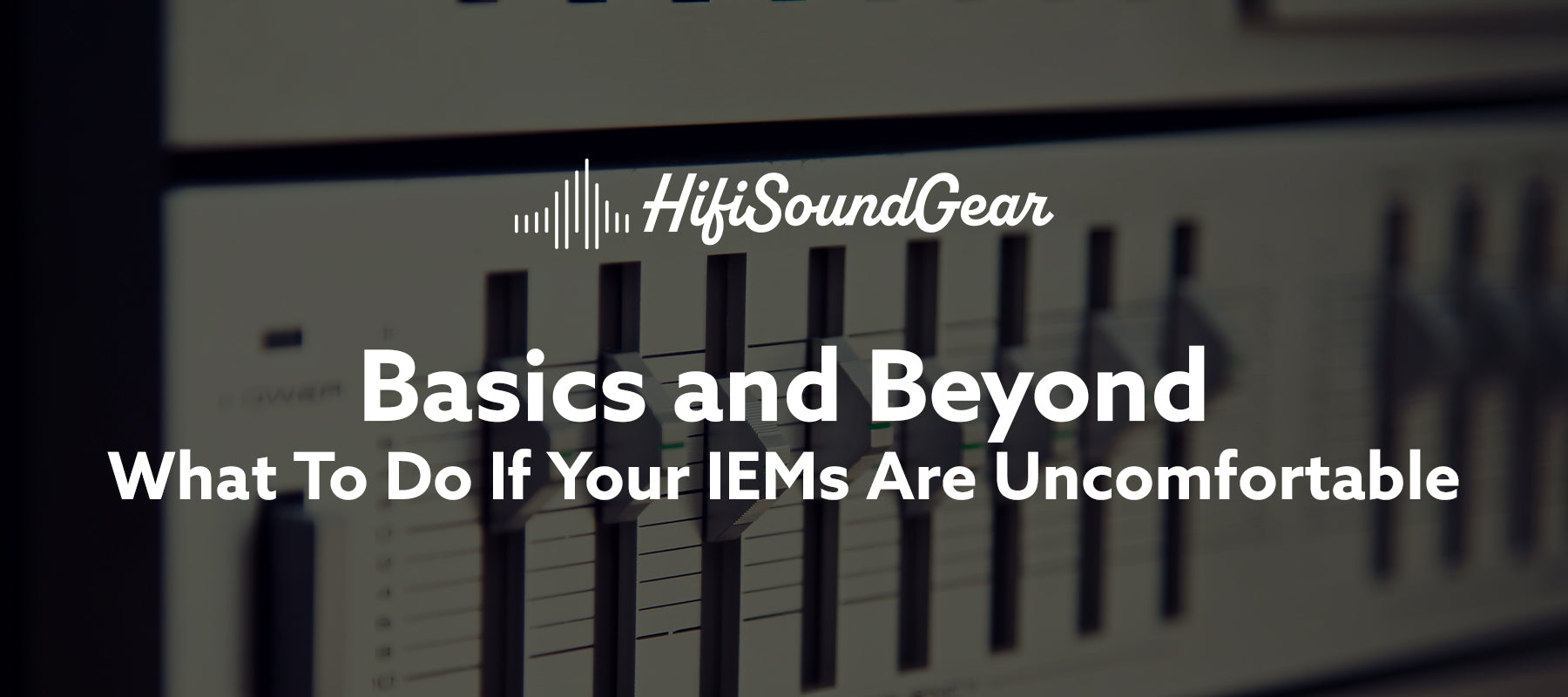
What To Do If Your IEMs Are Uncomfortable
Ever felt like your IEMs are waging a tiny war against your ears? You're not alone! Many IEM users report discomfort during extended listening sessions, and as someone who's tested everything from budget Chi-Fi to flagship masterpieces, I've experienced the full spectrum of ear canal chronicles. The good news? Most IEM comfort issues are solvable with the right approach.
Let's dive into the wonderful world of making these little sonic gems play nice with your ears!
Understanding Common IEM Comfort Issues

Think of your ear canal like a fingerprint - uniquely shaped and sized. This biological reality is why the "one-size-fits-all" approach often ends up being more like "one-size-fits-few." The most common comfort killers include:
Driver flex - that cringeworthy clicking sound when inserting IEMs? That's your driver's membrane flexing under pressure. While not harmful, it's about as pleasant as nails on a chalkboard and often indicates fitment issues.
Pressure points - particularly notorious around the concha (that bowl-shaped area of your outer ear) and the tragus (that little flap in front of your ear canal). When your IEMs create hotspots here, it's like having a pebble in your shoe - initially annoying, eventually unbearable.
Shell size mismatches - some IEM shells are about as ergonomic as trying to fit a square peg in a round hole. The size and shape of the shell can create pressure points that make marathon listening sessions feel like an endurance sport.
Mastering the Art of Tip Rolling

Welcome to the world of tip rolling, where finding the perfect ear tip is like discovering the Holy Grail of comfort! Here's your treasure map:
Silicone Tips: The Swiss Army knife of ear tips. They're durable, washable, and come in more varieties than coffee at your local café. Wide-bore tips typically offer better soundstage but might compromise isolation, while narrow-bore tips often enhance bass response.
Foam Tips: Think memory foam mattress for your ears. They offer superior isolation and comfort but need replacing more often than your smartphone's battery. Comply and Dekoni are the big players here, each offering their own spin on squish factor and durability.
Hybrid Tips: The best of both worlds - typically featuring a silicone exterior with foam components. They're like the luxury sports car of ear tips: comfortable yet precise.
Perfect Your Insertion Technique
Getting your IEMs properly seated is an art form. Here's the proven "reach around" method:
- Gently pull your outer ear up and back
- Insert the IEM at a slight angle
- Twist slightly forward while releasing your outer ear
- Allow the tip to expand and create a seal
Think of it like parallel parking - it might feel awkward at first, but with practice, it becomes second nature. A proper seal should feel secure but not pressured, like a firm handshake rather than a vice grip.
Cable and Ear Hook Optimization

Your IEM cable might be beautiful, but if it's fighting your ears, it's time for intervention. The key to comfortable cable wear lies in proper molding of the ear hooks. Here's how to win the cable management game:
- Heat-moldable ear guides can be shaped to your exact ear contour
- For glasses wearers, position the cable between the ear and glasses stem
- Consider lightweight cables if your current ones feel like they're playing tug-of-war with your ears
Long-term Comfort Solutions
The path to perpetual comfort requires some maintenance and possibly investment:
Regular cleaning is crucial - ear wax and debris can change how your IEMs fit over time. Clean your tips weekly and the nozzles monthly.
Consider the nuclear option - if universal IEMs just aren't cutting it, custom IEMs might be worth the investment. Think of it as getting a bespoke suit for your ears.
Breaking in period - give yourself time to adjust to new IEMs. Like breaking in new shoes, it can take a few weeks for both your ears and the IEMs to find their groove.
Conclusion
Remember, the quest for comfortable IEMs is a marathon, not a sprint. Your perfect fit is out there - it might just take some experimentation to find it. Start with tip rolling (it's the most cost-effective solution), perfect your insertion technique, and make adjustments to your cable setup. If all else fails, consider the custom IEM route.
The beauty of properly fitted IEMs is that they eventually become like a part of your ear - you forget they're there and just enjoy the music. And isn't that what it's all about? Now go forth and conquer those comfort issues! Your ears will thank you with endless hours of fatigue-free listening bliss.
Elevate Your Listening Experience With These Related Articles
Enjoyed this article? Feel free to check out these related topics!

